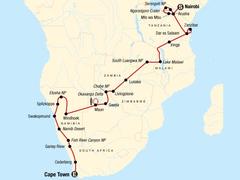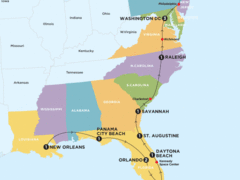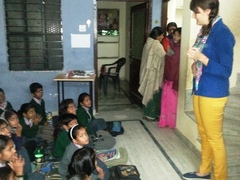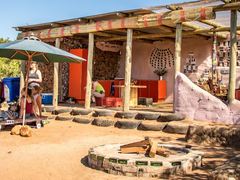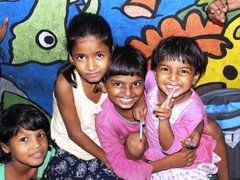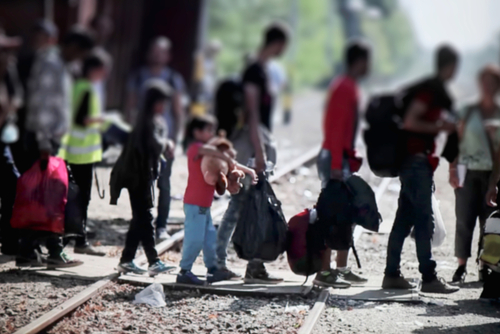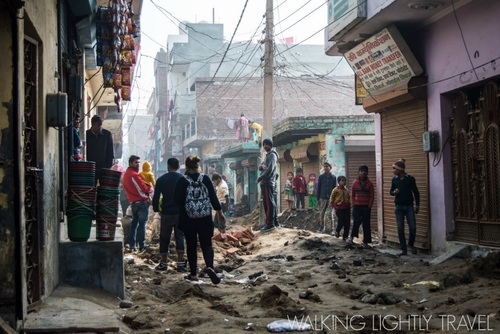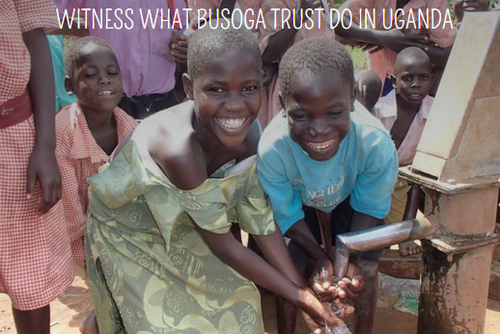Action for Children in Conflict is focused on addressing the root causes of conflict that force children into exploitative and abusive situations (abuse, neglect, poverty, violence) through tailored prevention and rehabilitation programmes. We are dedicated to enabling and empowering these children and their families in the community so that they can support themselves (emotionally, physically and economically).
We consider the history of Thika, and of Kenya, very important in understand the social, political and economic landscape in which we now operate. Outside of Kenya, Thika is synonymous only with Elspeth Huxley’s novel, the ‘Flame Trees of Thika’. The novel is based on Huxley’s own experiences as a colonial English family settling in Thika, in what was then British East Africa, in 1912, and shows Thika as a predominantly rural place, with a growing coffee plantation culture, where the white settlers and Kikuyu tribe lived in some kind of harmony. The Thika of today, however, is very, very different.
Thika is located approximately 40 kilometres from the capital, Nairobi, and the district has a population of over 645,000 people. It has, in recent years, grown to be part of Kenya’s industrial heartland, with extensive coffee and pineapple plantations dominating the geographical landscape. However, the collapse of the Kenyan coffee market in the 1990s as well as a countrywide, continued economic decline caused unemployment rates to dramatically increase, and neighbouring slums like Kiandutu (the second biggest slum in the country), Kiang’ombe, Gacagi and Matharau, to grow. With the post-election violence in 2007- 2008, the slums experienced massive growth in population as people migrated from Rift Valley province and Nyanza and settled in the slum areas.
These impoverished conditions have resulted in an increase in the number of children living and working on the streets, where they are vulnerable to violations of their rights, encountering verbal, physical, and sexual abuse in their daily lives. They have difficulties accessing basic services and few of them benefit from any formal education. A significant number of these boys and girls seek temporary relief from their situation through substance abuse, primarily glue sniffing. In this situation, they also become socially excluded, becoming trapped in a cycle of poverty, violence and abuse.
In August 2004, AfCiC Kenya was commissioned by the Thika District Children’s Office to conduct a census of the population of street children in Thika. The census identified about 400 street children. 70% of the street children interviewed came directly from Thika, 90% of which were from Kiandutu (the local slum area). Over 93% had attended school at some point in their life, and most of the children under 16 years reported that they would return to school if given the opportunity.
We see the education of both the children, and of the families and communities from which they come, as integral to working towards a better future for these children.
Action for Children in Conflict
Country: Kenya
Location: Thika District
Action for Children in Conflict UK in Kenya is a registered non-governmental organisation and UK Registered Charity that has been in Thika since 2004 operating programmes aimed at preventing, supporting and rehabilitating street and other acutely vulnerable children in Thika, Kenya.
Project Info
Program Duration:
3 weeks - 6 monthsProgram Costs:
500 - 750 $ Dollars (US)Founded / Established:
2004Org Type:
NGOVolunteer Support:
There will be an orientation in-country. Volunteers will be housed in a well-eqipped volunteer house, where they will be able to interact with each other, as well as the AfCiC staff. Support will be given on site to those who need it in specific area, though no official qualification is required.Volunteer Safety:
The accomodation is guarded by 24 hour security, though Thika is generally very safe.Update Listing
Apply to update this profile.
Learn more about advertising opportunities or contact us for details.
Action for Children in Conflict Reviews

Related Opportunities
After School Care in Naples
- International Napoli Network
- Naples
- 4 weeks to 3 months
- 100 to 1500 € Euro
Cape Town to the Serengeti
- G Adventures
- Multiple Destinations
- 4 weeks to 6 weeks
- 2000 to 3000+ £ Pound (UK)
Eastern Discovery (Start New Orleans)
- Contiki
- United States
- 2 weeks to 2 weeks
- 1500 to 1750 £ Pound (UK)
Primate Research Internship, Kenya
- Colobus Conservation
- Kenya
- 1 week to 1 Year+
- 100 to 2000 $ Dollars (US)
Sri Lanka Wildlife Conservation Volunteering
- Fronteering
- Sri Lanka
- 1 week to 4 weeks
- 1250 to 2000 € Euro
Volunteer Teaching in Jaipur, India
- Aii Group
- Jaipur, Rajasthan
- 1 week to 6 months
- 250 to 2500 $ Dollars (US)
Volunteer with a Rural Community in South Africa
- Hamba Africa
- Hoedspruit
- 2 weeks to 6 months
- 250 to 1000 £ Pound (UK)
Volunteer with street children in India
- Oyster Worldwide
- Delhi
- 3 weeks to 6 months
- 750 to 2500 £ Pound (UK)
Related Articles
10 Islamic Countries in Need of Assistance & How You Can Help
The news will often touch on the horrifying atrocities that occur in the developing world as countries go to war over re...
11/03/2019

Volunteer in India
Apply for a life changing experience by volunteering in India. You will get to integrate into local society, sample the ...
23/02/2015
5 Things to Know Before Volunteer Teaching in India
Volunteering in India has been popular for decades, and with so many inspiring projects available its a great way to ...
20/02/2016
Camp Cambodia: Travelling Solo With a Difference
So many people would love the opportunity to travel: some struggle with funding their adventure while others may not hav...
20/06/2018
Volunteer in Kenya
Kenya appeals for so many reasons, there is a gorgeous coast, wildlife, friendly locals and lots of amazing volunteer...
29/07/2019
Help Provide Safe Drinking Water in Uganda
Uganda, a nation hailed the pearl of Africa, from the latter half of the 20th century is typical of an earthly haven whe...
27/10/2017



